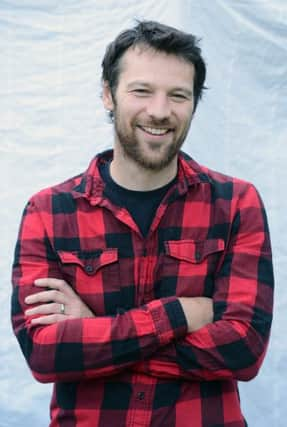Roger Cox: My favourite real life adventure stories of the year


The configuration of the diagram changes a couple of times each year, whenever I feel the need to bend the rules, but mostly it consists of three interlocking circles: one that we might call “extreme sports,” one that we might call “exploration and adventure” and one that we might call “nature and landscape”. Any story that fits within one of those circles, I figure, is fair game, but what really floats my boat is the stuff that sits in the sweet spots where two or even three of the circles overlap – extreme sports stories that also involve an element of exploration, say, or tales of exploration that make you look at the natural world in a new light. So perhaps it’s no surprise that my favourite “outdoors” books of 2015 (and I’m using the term in its loosest sense here, for reasons that will soon become apparent) are the ones have come closest to scoring a Venn diagram bullseye.
The only book that really managed to tickle all three of my Venn circles this year was Andrea Wulf’s utterly engrossing biography of Alexander von Humboldt, The Invention of Nature (John Murray, £25). It’s in the running for both an Andrew Carnegie Medal for Excellence in Non-fiction and a Costa Biography Award, and we’ll find out if it’s won one or both of those next month (my money’s on both). Humboldt’s 1799-1802 journey around South America was a truly groundbreaking act of exploration, and one which allowed him to revolutionise the way we look at the links between vegetation and climate, yet in Wulf’s account the diminutive Prussian scientist also shows himself to be quite the badass, trekking hundreds of miles through unforgiving terrain and attempting to climb the mighty Chimborazo, then thought to be the highest mountain in the world. He didn’t quite make it to the top, but he did reach an altitude of 5,878m, setting a new world record in the process.
Advertisement
Hide AdAdvertisement
Hide AdHumboldt lived in a golden age for exploration, when there were still plenty of blank spaces on the map, but today’s explorers have to be a little more creative in their search for virgin territory. Still, few feel the need to go as far as Norwegian adventurer Erling Kagge in their quest for novelty. Tired of doing all the usual stuff mere adventurers do – climbing Everest, reaching both poles, yada yada yada – Kagge hooked up with the photographer and urban historian Steve Duncan and set about exploring the network of sewers beneath New York City. The result is Under Manhattan (World Editions, £14.99), an account of the pair’s journey around the Big Apple’s shadowy and eye-wateringly pungent underworld that is by turns fascinating and utterly revolting. Some of the descriptions of the things that happen to human waste as it flows along beneath the streets in prodigious quantities may well have you reaching for a sick bag, yet for all its ugliness, Kagge’s yarn is a rare thing for our times – a true exploration story, in the sense that it shows us never-before-seen parts of our world (although whether we necessarily want to see them, of course, is another matter.)
Also very good at offering a sneak peek into an otherwise invisible world was Nature’s Architect by veteran Scottish nature writer Jim Crumley (Saraband, £12.99). Ostensibly this is a book about the reintroduction of beavers to Scotland, but as Crumley spends far more time hanging out beside rivers trying to catch sight of these elusive creatures than actually watching them beavering around, what we mostly get are vivid descriptions of some of the more out-of-the-way riverbanks of rural Perthshire. That might not sound very exciting, but Crumley is a master prose stylist, and some of his evocations of what he calls “beaver country” are spellbinding.
If I could only take one outdoors book published in 2015 to my desert island, though, it would be Barbarian Years: A Surfing Life by William Finnegan (Little & Brown, £14.99). Yes, technically it’s a book about surfing, but it’s also a brilliant exploration of the Peter Pan complex that afflicts many extreme sports obsessives, and a brave, honest account of what happens when the demands of the quest (in this case, the quest for perfect surf) start to conflict with the demands of the real world – written by somebody who’s been there, struggled, and survived. n